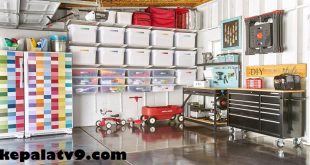As a homeowner, you’re likely to encounter plumbing issues at some point. While major problems should always be handled by professionals, there are several common plumbing woes that you can address on your own with the right knowledge and tools. Learning some basic DIY plumbing fixes can save you time and money. In this guide, we’ll explore essential plumbing repairs that every homeowner should know how to handle.
1. Unclogging a Drain
One of the most common plumbing problems is a clogged drain. Whether it’s your kitchen sink, bathroom sink, or shower, drains can become blocked over time. To fix this issue:
- Try a Plunger: A simple plunger can often do the trick. Make sure there’s enough water to cover the plunger’s rubber end, create a seal, and push up and down several times vigorously.
- Use a Drain Snake: If the plunger doesn’t work, a drain snake or auger can help. Insert it into the drain and turn the handle to break up the clog.
- Homemade Drain Cleaner: You can also make a DIY drain cleaner using a mixture of baking soda and vinegar. Pour it down the drain, let it sit for a while, and then flush with hot water.
2. Fixing a Running Toilet
A running toilet not only wastes water but can also be annoying. To repair it:
- Check the Flapper Valve: Often, the issue is a flapper valve that doesn’t seal properly. Open the tank and adjust or replace the flapper if necessary.
- Adjust the Float: The float in the toilet tank controls the water level. If it’s set too high, water will continuously flow into the overflow tube. Adjust it to the correct level.
3. Repairing a Leaky Faucet
A dripping faucet can waste a significant amount of water over time. Here’s how to tackle it:
- Turn Off the Water: Before you start, turn off the water supply to the faucet.
- Replace the Washer: In many cases, a leaky faucet is due to a worn-out washer. Disassemble the faucet, remove the old washer, and replace it with a new one.
4. Dealing with Low Water Pressure
Low water pressure can be frustrating. To improve it:
- Clean the Aerator: Sediments and debris can accumulate in the aerator, reducing water flow. Remove the aerator from the faucet, clean it thoroughly, and reattach it.
5. Sealing a Leaky Pipe
A leaking pipe can lead to water damage if not fixed promptly. You can temporarily seal a small leak until a professional plumber arrives:
- Epoxy Putty: Clean the area around the leak, and apply epoxy putty over it. It will create a temporary seal. kepalatv9.com
6. Insulating Pipes
In colder climates, pipes can freeze and burst during winter. To prevent this:
- Insulate Your Pipes: Use foam pipe insulation to wrap exposed pipes in unheated areas like basements or crawl spaces.
Remember that while these DIY plumbing fixes can be effective for minor issues, if you ever feel unsure or the problem is beyond your expertise, it’s best to call a professional plumber. Attempting complex plumbing repairs without the necessary skills can lead to more extensive and expensive problems. Nonetheless, having these basic plumbing skills can empower you as a homeowner and save you from common plumbing headaches.



